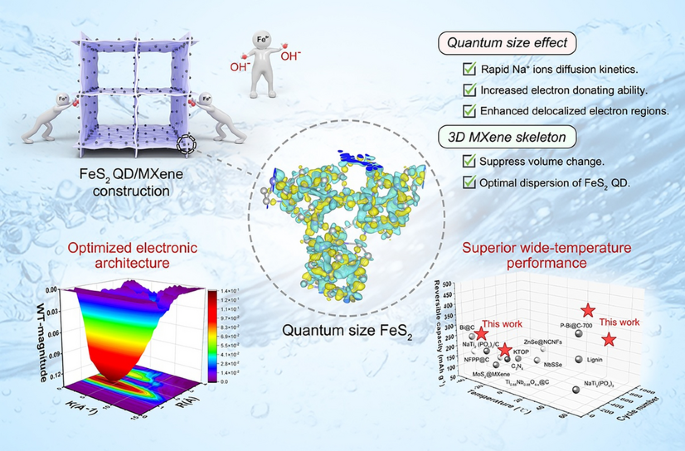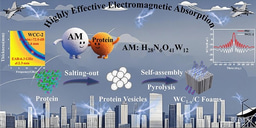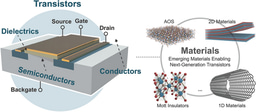Quantum‑Size FeS2 with Delocalized Electronic Regions Enable High‑Performance Sodium‑Ion Batteries Across Wide Temperatures

As the demand for sustainable and low-cost energy storage grows, sodium-ion batteries (SIBs) have emerged as a promising alternative to lithium-ion systems. However, their performance under extreme temperatures remains a major hurdle. Now, researchers from China University of Mining and Technology, led by Professor Danyang Zhao and Professor Yanwei Sui, have developed a breakthrough anode material—quantum-sized FeS2 anchored on 3D MXene—that delivers exceptional sodium storage performance from −35 °C to 65 °C.
Why This Innovation Matters
- Wide-Temperature Operation: The FeS2 quantum dot (QD)/MXene anode maintains high capacities of 255.2 mAh g-1 at −35 °C and 424.9 mAh g-1 at 65 °C, enabling reliable battery performance in extreme environments.
- Fast Ion Transport: Quantum confinement creates delocalized electronic regions and abundant edge defects, significantly reducing Na⁺ diffusion barriers and enhancing reaction kinetics.
- High Energy Density: When paired with Na3V2(PO4)3 cathode, the full cell achieves a record energy density of 162.4 Wh kg-1 at −35 °C, outperforming most reported wide-temperature SIBs.
Design Highlights
- Quantum-Size Engineering: Ultra-small FeS2QDs (5–8 nm) maximize edge atom exposure, promoting charge delocalization and pseudocapacitive behavior without compromising structural integrity.
- 3D MXene Skeleton: Ti3C2 MXene forms a robust, conductive scaffold via Fe–O–Ti bonding, preventing QD aggregation and accommodating volume changes during cycling.
- Strong Interfacial Coupling: X-ray absorption and Raman spectroscopy confirm Ti–O–Fe bonds and charge redistribution, which enhance electronic conductivity and stabilize the active material.
Performance and Outlook
- Long-Term Stability: The anode retains 370.1 mAh g-1 after 2500 cycles at 1 A g-1, demonstrating superior cycling durability across temperatures.
- Fast Charge/Discharge: Pseudocapacitive contributions dominate (up to 77%), enabling rapid Na+ storage and high-rate capability.
- Scalable Strategy: The ion-induced self-assembly method is extendable to other transition metal sulfides (e.g., CoS2, NiS2), offering a universal route to high-performance SIB anodes.
This work introduces a powerful strategy to harness quantum-size effects for wide-temperature energy storage, paving the way for durable, high-energy sodium-ion batteries in aerospace, electric vehicles, and grid systems. Stay tuned for more innovations from Professor Zhao and Professor Sui’s team!
Follow the Topic
-
Nano-Micro Letters

Nano-Micro Letters is a peer-reviewed, international, interdisciplinary and open-access journal that focus on science, experiments, engineering, technologies and applications of nano- or microscale structure and system in physics, chemistry, biology, material science, and pharmacy.






Please sign in or register for FREE
If you are a registered user on Research Communities by Springer Nature, please sign in